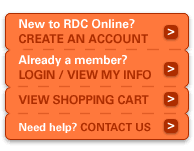Here are six proven approaches to increase Information Technology efficiencies, leverage economies and reduce costs – all within the next six months:
- 1. Review all IT Projects
- Objectively review and prioritize all new or in-process projects. Consider changes in scope, timetables and budgets to realize immediate savings.
- 2. Review the integration, efficiency, effectiveness and ROI of all Enterprise Systems
- Objectively review all Enterprise Systems corporate wide and worldwide to ensure they are efficiently and effectively integrated, and your company is realizing a strong Return on Investment (ROI). Consider the immediate elimination of redundancies and non-core systems to reduce costs.
- 3. Review and audit all Telecommunications
- Objectively review all telecommunications architectures, plans, processes and contracts to ensure your company is leveraging rapidly advancing technology, the cost-competitiveness and incentives of providers, and well as economies of scale. Consider a conservative target of at least 10 percent in aggregate savings.
- 4. Review Technology Licensing Agreements
- Objectively review all technology licensing agreements – e.g., Applications, Systems, Servers – and pricing models for acquiring, upgrading, maintaining and managing software to ensure your company is getting its money’s worth. Consider invoking the “termination” clause in non-critical licenses for quick cost reduction.
- 5. Review your Entire IT organization
- Objectively review your entire IT organization to ensure it’s operating effectively and efficiently; the IT budget is predictable, affordable and under control; and the IT strategy and project priorities are consistent with your business strategy. Consider aggressive consolidation and/or centralization to gain economies.
- 6. Explore Outsourcing
- For intermediate savings, consider off-shore outsourcing of Applications Development and/or Maintenance, an Application Service Provider (ASP) model, and Website development and hosting. For longer-term savings, consider outsourcing key Business Processes (e.g., CRM, Equipment, Finance /Accounting, HR, Logistics, Procurement / SCM, Security); and Technology Services (e.g., Data Center, Disaster Recovery / Hot Sites, Desk Tops, Networks, Call Center, Help Desk). Outsourcing benefits include Core Business Focus, Skills Infusion, Service Improvements, Risk Mitigation, Asset Conversion and Capital Avoidance. Pricing models include “Cost” contracts (e.g., Cost Plus, Time and Materials, Fee for Service, Fixed Price) and “Value” contracts (e.g., Gain Share Percentage, Shared Risk / Percentage Reward, Business-Benefit Based). A typical transition to Outsourcing, depending on specific Service Level Agreements (SLAs), can yield as much as 10 percent to 15 percent in overall savings.
Source: The Tech-Savvy Executive, Volume 1, Number 3.
